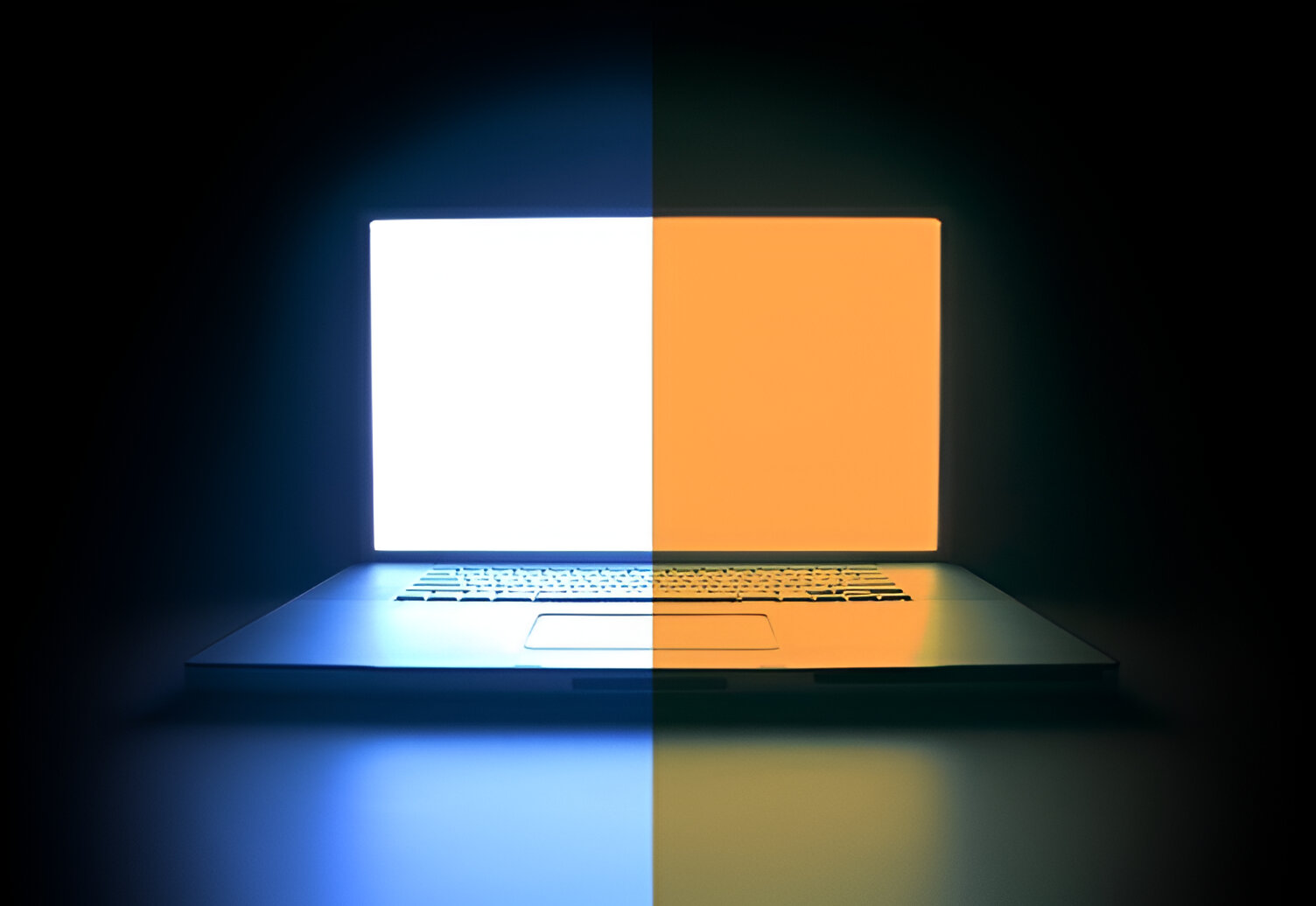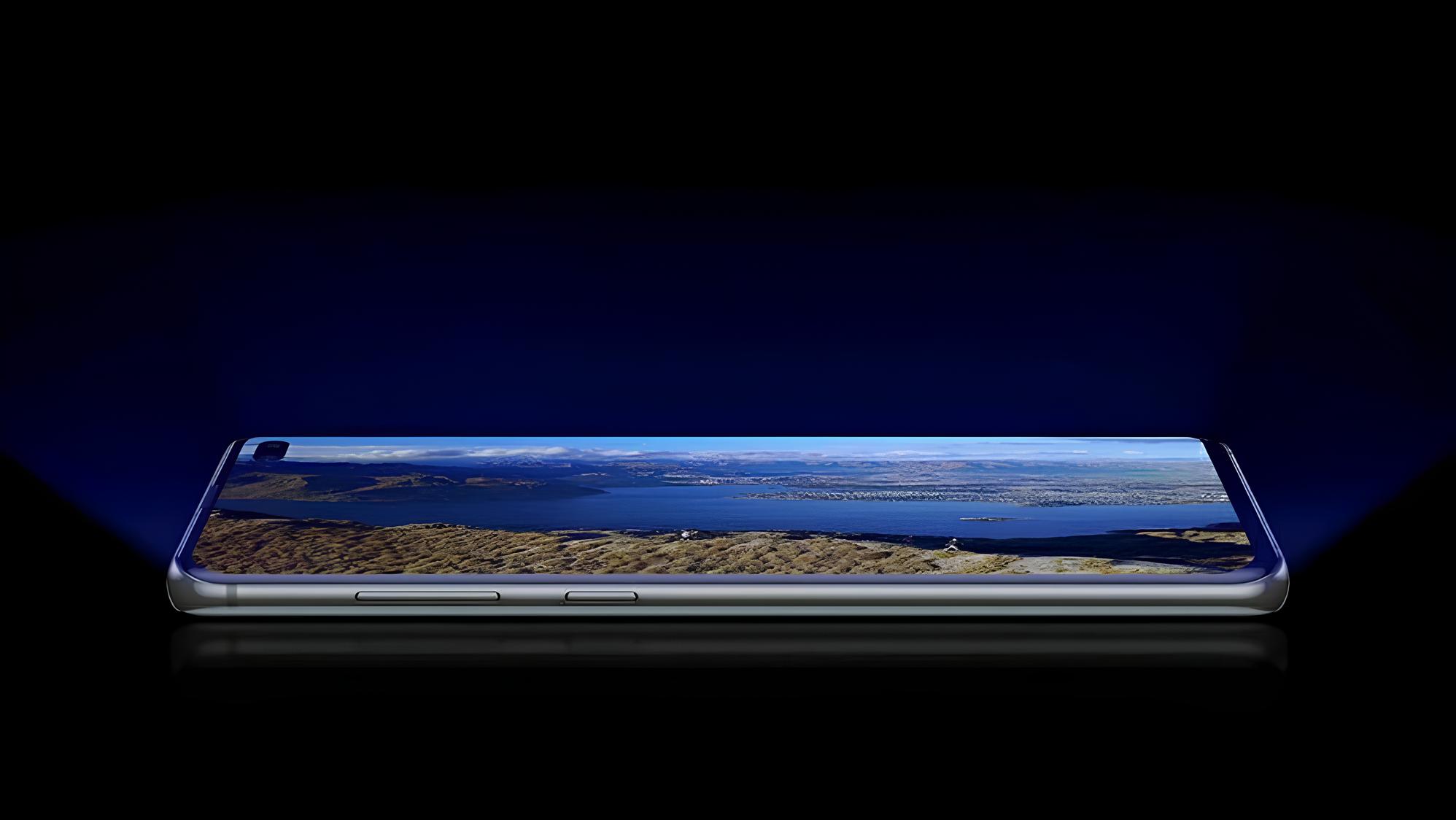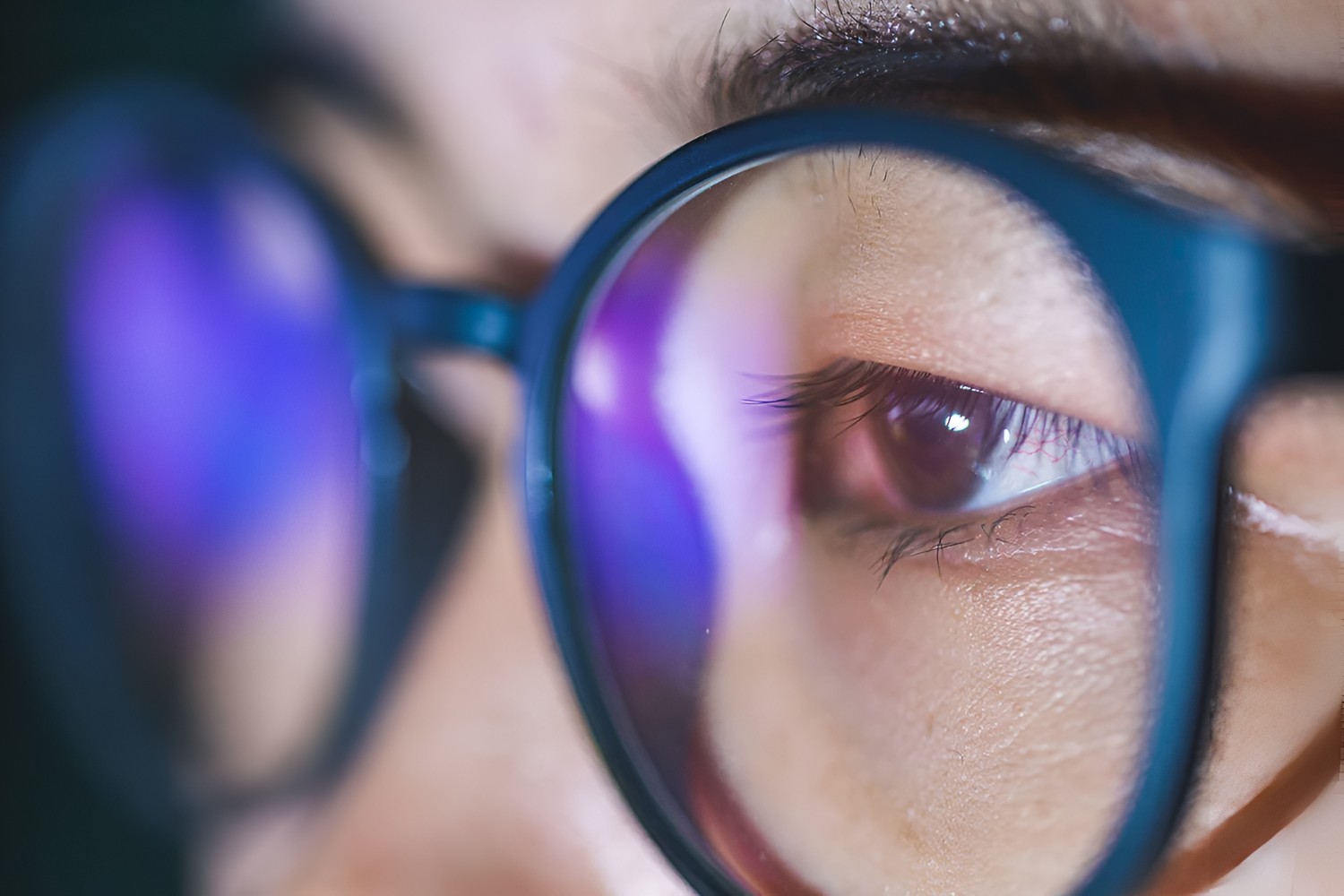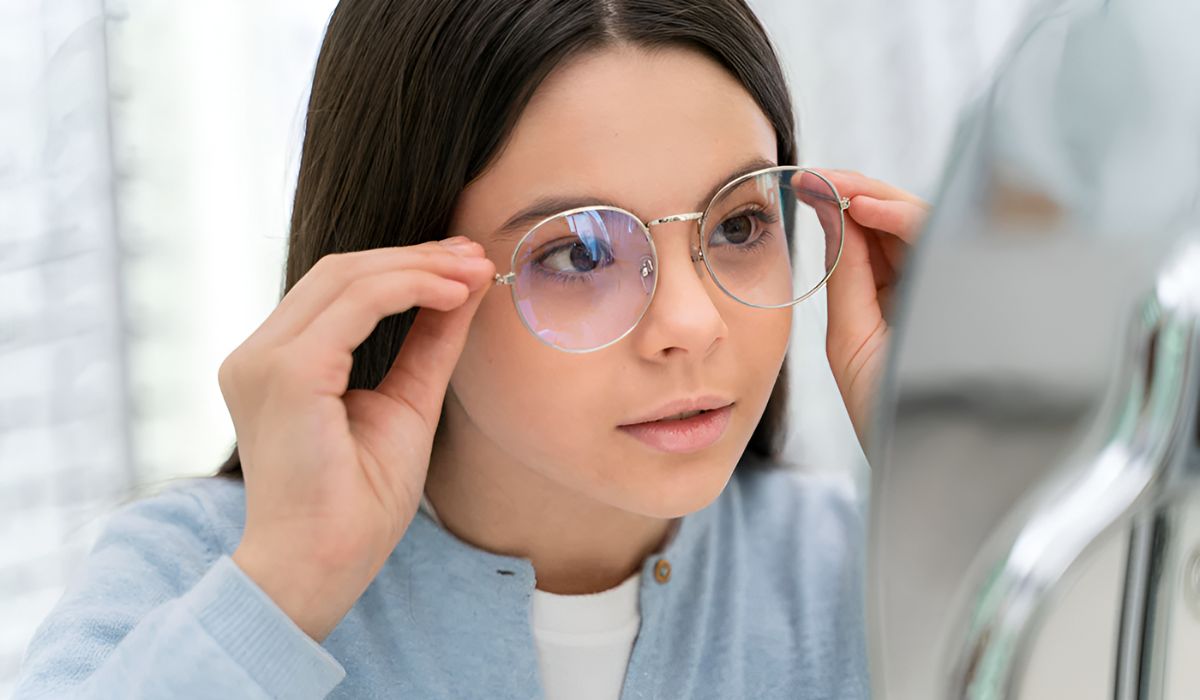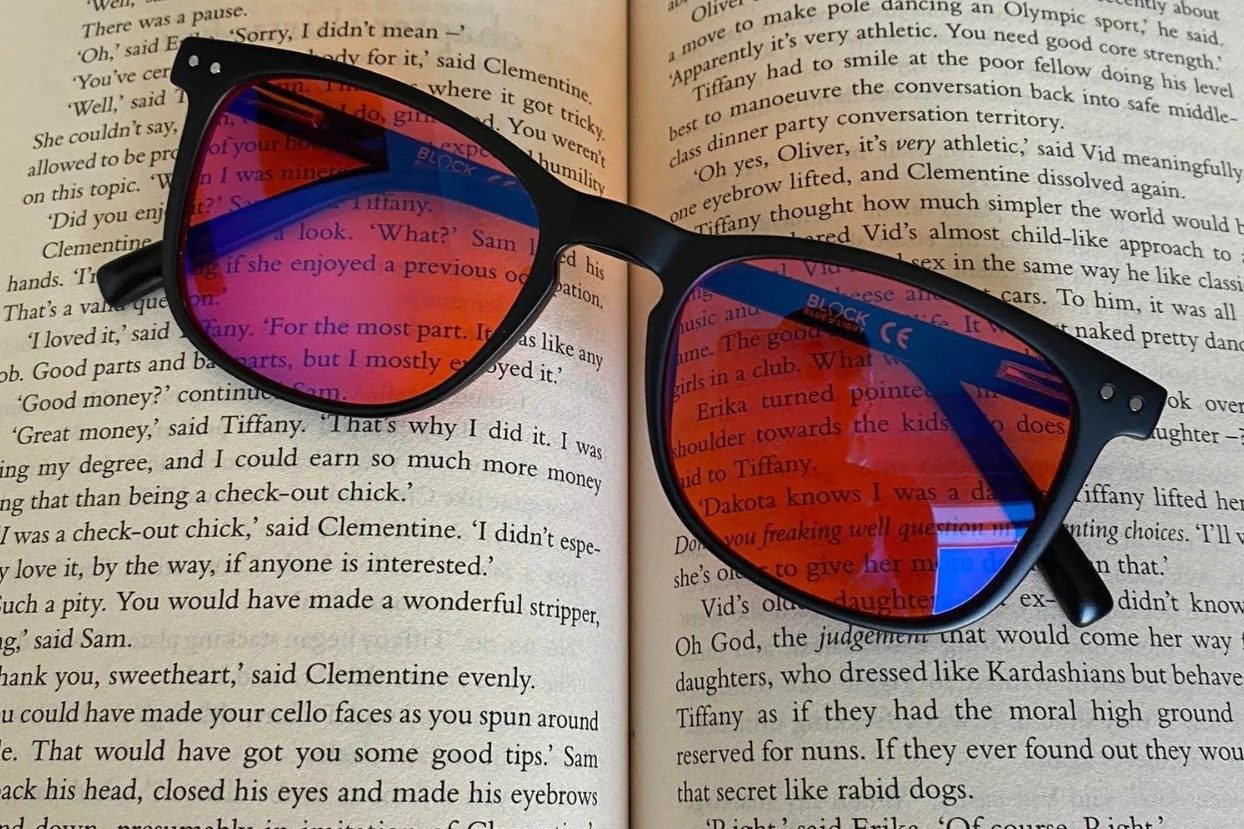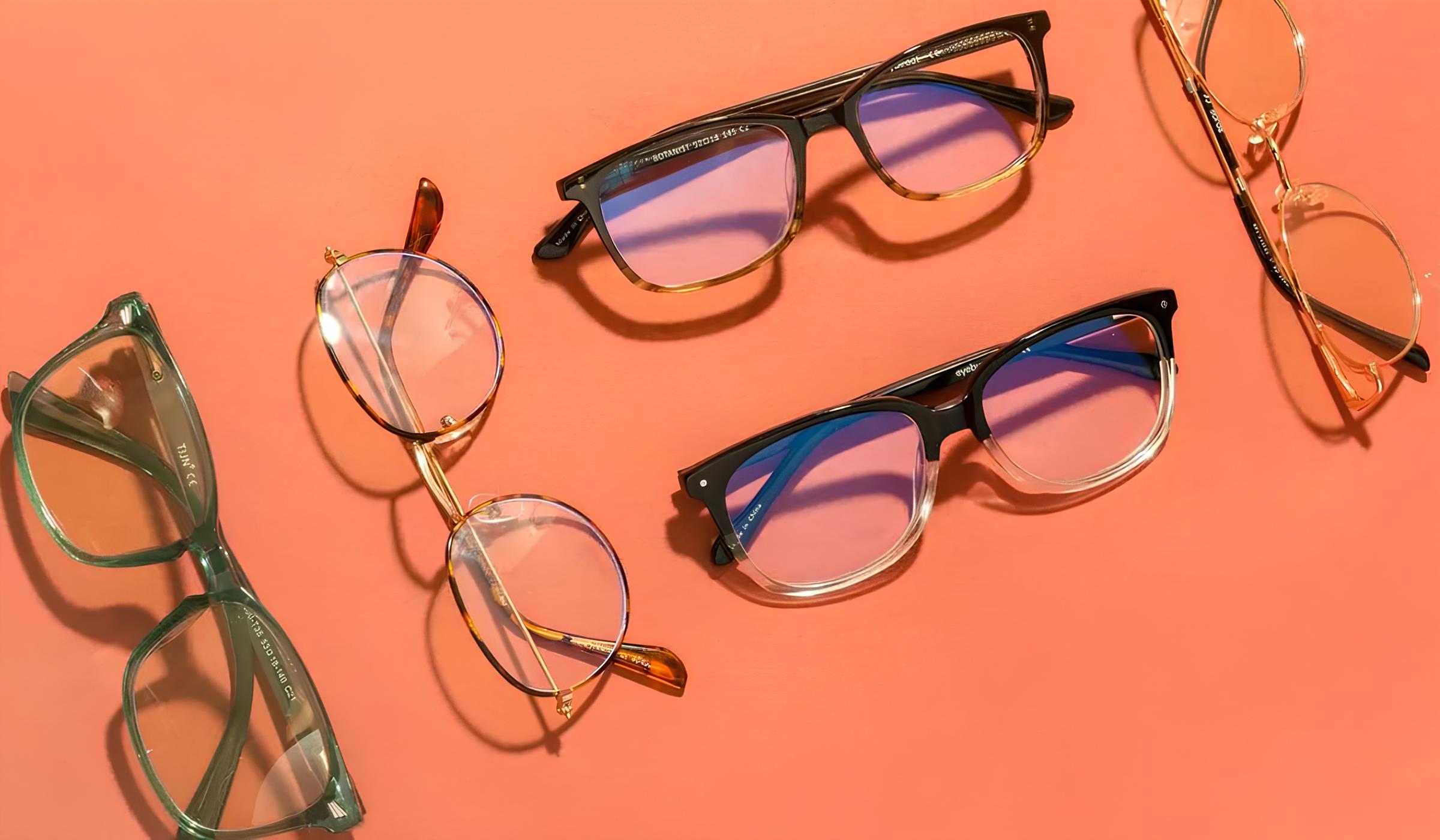Introduction
In today’s digital age, our lives are intertwined with technology, from smartphones and tablets to laptops and televisions. While these devices have undoubtedly transformed the way we live, work, and communicate, they also expose us to a lesser-known but potentially harmful element: blue light.
As we spend more time in front of screens, concerns about the impact of blue light on our eyes and overall well-being have become increasingly prevalent. This has led to a growing interest in blue light filters and their potential benefits. But what exactly is blue light, and why is it important to understand its effects on our eyes?
In this article, we will delve into the world of blue light and explore its potential impact on our eyes and health. We will also uncover the purpose and functionality of blue light filters, shedding light on their role in mitigating the potential risks associated with prolonged screen time. By gaining a deeper understanding of blue light and the benefits of using a blue light filter, we can make informed decisions to protect our eyes and optimize our digital experiences.
Let's embark on a journey to unravel the mysteries of blue light and discover how a simple yet powerful tool like a blue light filter can make a meaningful difference in our daily lives.
What is Blue Light?
Blue light is a specific range of visible light with a short wavelength and high energy. It is part of the spectrum of light that is emitted by the sun, as well as by digital screens, LED lighting, and fluorescent lighting. The human eye is particularly sensitive to blue light, and it plays a crucial role in regulating our circadian rhythm, which influences our sleep-wake cycle.
One of the primary sources of blue light exposure in modern times is digital devices such as smartphones, tablets, computers, and televisions. As we increasingly rely on these devices for work, entertainment, and communication, our exposure to blue light has significantly intensified.
The prevalence of blue light in our daily lives has raised concerns about its potential impact on our eyes and overall well-being. Research suggests that prolonged exposure to blue light, especially in the evening and nighttime, can disrupt our circadian rhythm and interfere with the quality of our sleep. Additionally, some studies have indicated that excessive exposure to blue light may contribute to digital eye strain, which can cause symptoms such as dry eyes, headaches, and blurred vision.
Furthermore, there is growing interest in understanding the potential long-term effects of blue light exposure on eye health. While the human eye has natural filters that can help protect against certain levels of blue light, the cumulative and prolonged exposure from digital devices has sparked discussions about the need for additional protection.
In essence, blue light is an integral part of the light spectrum that surrounds us, and its prevalence in digital screens has prompted a closer examination of its effects on our eyes and well-being. Understanding the nature of blue light and its implications is essential for making informed decisions about how we interact with technology and how we can safeguard our visual health in the digital age.
How Does Blue Light Affect Our Eyes?
Blue light, with its short wavelength and high energy, has the potential to impact our eyes in various ways. One of the primary concerns associated with blue light exposure is its effect on the circadian rhythm, which can disrupt our sleep patterns. The human eye has specialized cells that are sensitive to light, particularly in the blue wavelength range. When these cells are exposed to blue light, they send signals to the brain, influencing the production of melatonin, a hormone that regulates our sleep-wake cycle.
Prolonged exposure to blue light, especially during the evening and nighttime hours, can suppress the production of melatonin, leading to difficulties in falling asleep and achieving restful sleep. This disruption of the circadian rhythm can have far-reaching implications for our overall health and well-being, as quality sleep is essential for physical and mental rejuvenation.
In addition to its impact on sleep patterns, blue light can contribute to digital eye strain, also known as computer vision syndrome. When we engage with digital screens for extended periods, our eyes are subjected to a significant amount of blue light. This can lead to symptoms such as dry eyes, eye fatigue, headaches, and blurred vision. The continuous focusing and refocusing required when staring at screens can also strain the eye muscles, further exacerbating discomfort and visual fatigue.
Furthermore, there is ongoing research into the potential long-term effects of blue light exposure on eye health. Some studies suggest that excessive exposure to blue light may contribute to the development of age-related macular degeneration (AMD), a leading cause of vision loss. While the evidence is still being evaluated, the cumulative impact of blue light on retinal cells and the potential for oxidative stress have raised concerns about its role in contributing to eye conditions.
Understanding how blue light affects our eyes is crucial for implementing measures to mitigate its potential negative effects. By recognizing the impact of blue light on our circadian rhythm, visual comfort, and long-term eye health, we can make informed choices to protect our eyes and optimize our digital experiences. This awareness also underscores the significance of incorporating blue light filters and other protective measures to minimize the potential risks associated with prolonged screen time.
What is a Blue Light Filter?
A blue light filter, also known as a blue light blocking or blue light reduction filter, is a specialized tool designed to minimize the amount of blue light emitted by digital screens. It works by applying a unique filter that targets the specific wavelengths of blue light, reducing their transmission while allowing other wavelengths to pass through. This selective filtration aims to diminish the potential negative effects of blue light exposure on the eyes and overall well-being.
These filters can be implemented through various mediums, including physical screen protectors, software applications, and built-in screen settings on digital devices. Physical blue light filters are often transparent overlays that can be placed over the screens of smartphones, tablets, and computers. They are engineered to absorb or reflect a portion of the blue light emitted by the display, thereby reducing the intensity of blue light reaching the eyes.
Software-based blue light filters, on the other hand, operate by adjusting the color temperature and intensity of the screen to emit warmer, less blue-enriched light. These applications can be customized to gradually reduce blue light emission as the day progresses, aligning with the natural changes in ambient light and the body's circadian rhythm.
In addition, many modern digital devices come equipped with built-in blue light filter settings that allow users to activate a "night mode" or "blue light reduction" feature. These settings alter the color temperature of the display, shifting it towards warmer tones and minimizing the emission of blue light, particularly during evening hours. By leveraging these built-in features, users can proactively reduce their exposure to blue light without the need for additional accessories or applications.
The primary objective of a blue light filter is to mitigate the potential adverse effects of blue light on the eyes and sleep patterns. By reducing the amount of blue light that reaches the eyes, these filters aim to alleviate digital eye strain, minimize disruptions to the circadian rhythm, and potentially mitigate long-term risks associated with excessive blue light exposure.
In essence, a blue light filter serves as a proactive measure to address the challenges posed by prolonged screen time in today's digital landscape. By incorporating these filters into our digital devices, we can take significant strides towards safeguarding our visual comfort and well-being in the face of ubiquitous blue light exposure.
How Does a Blue Light Filter Work?
A blue light filter operates by selectively targeting and reducing the transmission of specific wavelengths of blue light emitted by digital screens. This specialized filtration process is designed to minimize the potential negative effects of blue light on the eyes and overall well-being. By understanding the underlying mechanisms of how a blue light filter functions, we can gain insight into its role in mitigating the impact of prolonged screen time.
Physical blue light filters, often in the form of transparent overlays, utilize materials that can absorb or reflect a portion of the blue light emitted by digital displays. These filters are engineered to attenuate the intensity of blue light reaching the eyes while allowing other wavelengths to pass through. The design of these physical filters enables them to selectively target the harmful blue light spectrum, providing a tangible barrier between the eyes and the potentially detrimental effects of prolonged blue light exposure.
In contrast, software-based blue light filters operate by dynamically adjusting the color temperature and intensity of the screen to emit warmer, less blue-enriched light. These applications are designed to mimic the natural shifts in ambient light throughout the day, gradually reducing blue light emission as evening approaches. By leveraging software-based filters, users can experience a seamless transition to warmer light, minimizing the potential disruptions to their circadian rhythm and visual comfort.
Furthermore, modern digital devices often feature built-in blue light filter settings that allow users to activate a "night mode" or "blue light reduction" feature. These settings modify the color temperature of the display, shifting it towards warmer tones and reducing the emission of blue light, particularly during evening hours. By integrating these built-in features, users can proactively manage their exposure to blue light without the need for external accessories or applications.
The primary goal of a blue light filter is to mitigate the potential adverse effects of blue light on the eyes and sleep patterns. By strategically reducing the amount of blue light that reaches the eyes, these filters aim to alleviate digital eye strain, minimize disruptions to the circadian rhythm, and potentially mitigate long-term risks associated with excessive blue light exposure.
In essence, a blue light filter serves as a proactive measure to address the challenges posed by prolonged screen time in today's digital landscape. By leveraging the selective filtration capabilities of physical overlays, software applications, and built-in device settings, individuals can actively protect their visual comfort and well-being amidst the pervasive presence of blue light in their daily digital interactions.
Benefits of Using a Blue Light Filter
Using a blue light filter offers a myriad of benefits that can positively impact our visual comfort, sleep quality, and overall well-being in the digital age. By proactively addressing the potential risks associated with prolonged screen time, blue light filters play a pivotal role in enhancing our digital experiences and safeguarding our eye health. Let's explore the compelling advantages of integrating blue light filters into our daily interactions with digital devices.
-
Alleviating Digital Eye Strain: One of the primary benefits of using a blue light filter is its ability to alleviate digital eye strain, also known as computer vision syndrome. By reducing the intensity of blue light that reaches the eyes, these filters can help minimize symptoms such as dry eyes, eye fatigue, headaches, and blurred vision, which are commonly associated with prolonged screen time. This contributes to enhanced visual comfort and reduced discomfort during and after digital device usage.
-
Protecting Circadian Rhythm: Blue light filters aid in protecting our circadian rhythm by minimizing the disruptive effects of blue light on our sleep patterns. By reducing the exposure to stimulating blue light, especially during evening and nighttime hours, these filters can support the natural production of melatonin, promoting better sleep quality and overall well-being. This can be particularly beneficial for individuals who engage with digital screens before bedtime, as it helps mitigate the potential impact on their sleep-wake cycle.
-
Potential Long-Term Eye Health Benefits: While the long-term effects of blue light exposure are still being studied, using a blue light filter may offer potential benefits for maintaining eye health over time. By reducing the cumulative exposure to blue light, especially the high-energy wavelengths that can impact retinal cells, these filters have the potential to contribute to the preservation of ocular health and potentially mitigate the risks associated with conditions such as age-related macular degeneration (AMD).
-
Enhancing Visual Comfort: Incorporating a blue light filter can enhance visual comfort during extended periods of screen time. By minimizing the intensity of blue light, users may experience reduced eye strain, improved contrast perception, and a more comfortable viewing experience. This can be particularly advantageous for individuals who rely on digital devices for work, entertainment, or educational purposes, as it supports sustained visual comfort and usability.
-
Customizable and Seamless Integration: With the availability of physical screen protectors, software applications, and built-in device settings, blue light filters offer customizable and seamless integration into various digital devices. Users can choose the most suitable option based on their preferences and device compatibility, allowing for effortless implementation of blue light filtering solutions across different platforms and usage scenarios.
By harnessing the benefits of blue light filters, individuals can actively mitigate the potential negative effects of blue light exposure and cultivate a more comfortable and visually supportive digital environment. These filters empower users to embrace technology while prioritizing their visual well-being, underscoring the significance of integrating proactive measures into our digital lifestyles.
In summary, the benefits of using a blue light filter extend beyond immediate visual comfort, encompassing the preservation of circadian rhythm, potential long-term eye health advantages, and customizable integration options. By recognizing and harnessing these benefits, individuals can navigate the digital landscape with greater comfort and confidence, knowing that they are taking proactive steps to safeguard their visual health and well-being in the face of pervasive blue light exposure.
Conclusion
In conclusion, the pervasive presence of blue light in our daily interactions with digital devices has prompted a closer examination of its potential impact on our eyes and overall well-being. As we navigate the digital landscape, it becomes increasingly crucial to understand the implications of blue light exposure and implement proactive measures to mitigate its potential negative effects.
By unraveling the mysteries of blue light and its effects on our circadian rhythm, visual comfort, and long-term eye health, we gain valuable insights into the significance of integrating blue light filters into our digital experiences. These filters, whether in the form of physical overlays, software applications, or built-in device settings, offer a multifaceted approach to addressing the challenges posed by prolonged screen time.
The benefits of using a blue light filter extend beyond immediate visual comfort, encompassing the alleviation of digital eye strain, protection of circadian rhythm, potential long-term eye health advantages, and customizable integration options. By leveraging these benefits, individuals can actively safeguard their visual well-being and enhance their digital experiences while embracing the technological advancements that define our modern lives.
As we strive to strike a balance between technology and well-being, the role of blue light filters emerges as a pivotal component of our digital lifestyles. These filters empower us to engage with digital devices while minimizing the potential risks associated with blue light exposure, fostering a more comfortable and visually supportive environment for our daily interactions.
Ultimately, the integration of blue light filters reflects a proactive and mindful approach to navigating the digital age. By recognizing the importance of protecting our eyes and optimizing our digital experiences, we pave the way for a harmonious coexistence with technology while prioritizing our visual health and overall well-being.
In essence, the journey to understanding the benefits of blue light filters culminates in the recognition of their transformative potential in enhancing our digital interactions and preserving our visual comfort. By embracing these filters as valuable tools in our digital arsenal, we embark on a path towards informed and empowered engagement with technology, ensuring that our eyes receive the care and protection they deserve in the face of ubiquitous blue light exposure.







